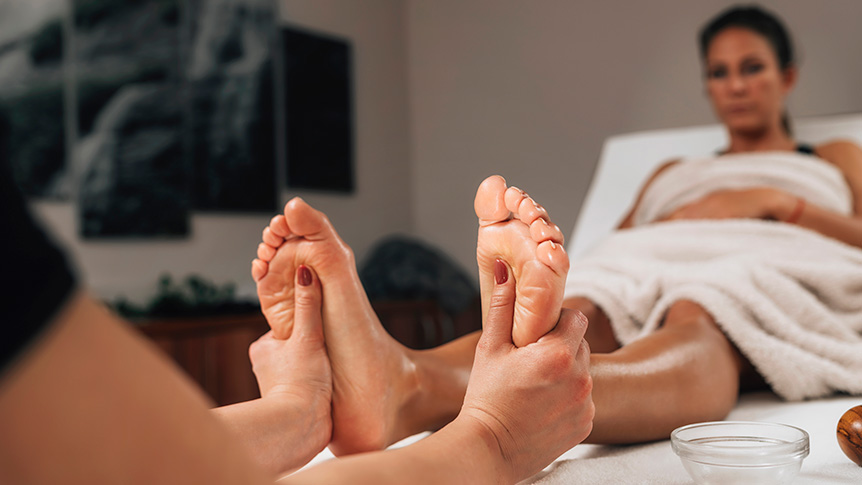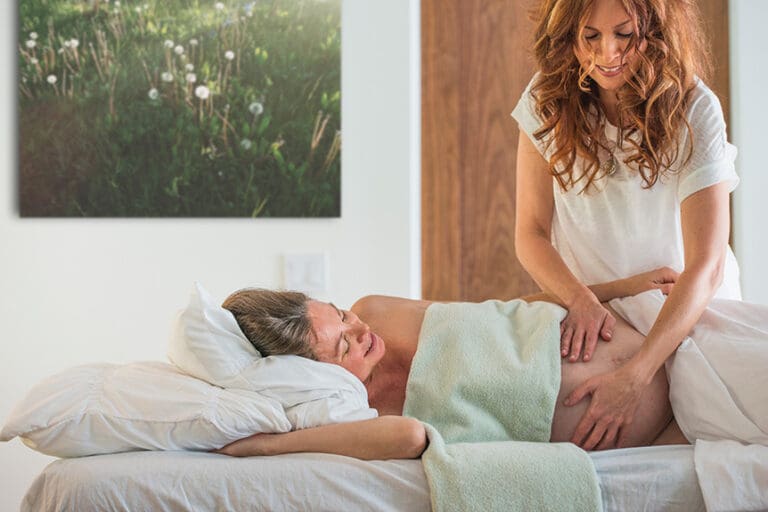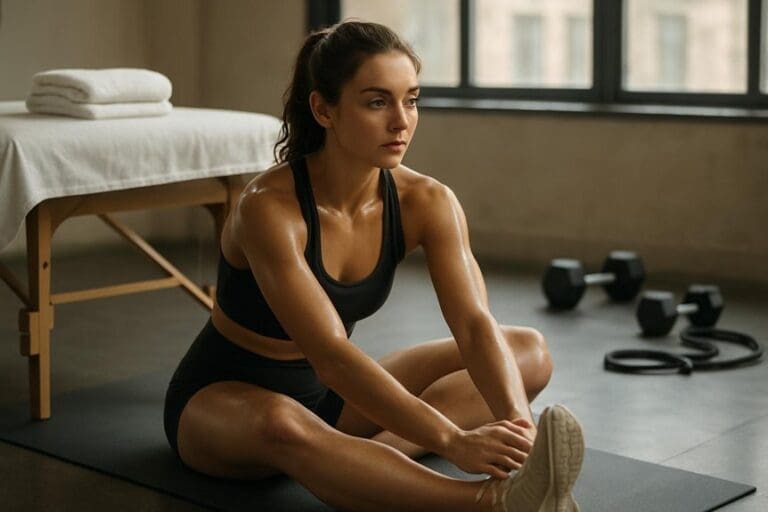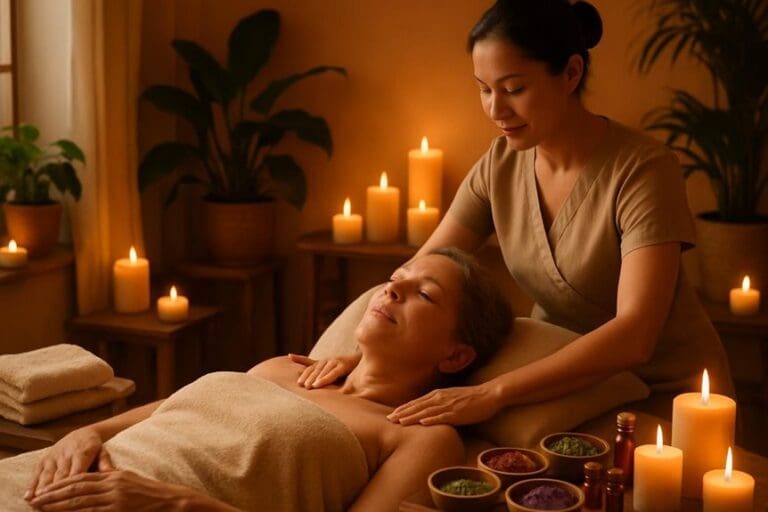It applies graded pressure to foot reflex points to modulate autonomic balance, lowering sympathetic arousal. Randomised trials show modest benefits for insomnia: 2–4 point improvements on the Pittsburgh Sleep Quality Index, shorter sleep latency, and 10–20 minute reductions in wake after sleep onset over 4–8 sessions. Mechanisms include shifts in heart rate variability toward parasympathetic dominance, reduced perceived stress, and lower heart rate and blood pressure. It is low-risk and complements sleep hygiene. Further details explain techniques, points, and session expectations.
What It Is and How It Relates to Sleep
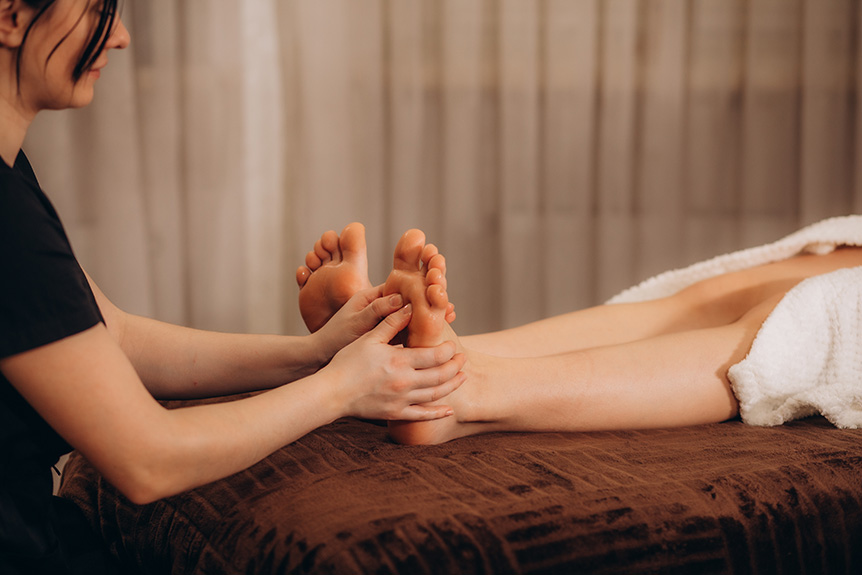
It is a manual therapy that applies targeted pressure to specific points on the feet, hands, or ears that correspond to body systems; it is used to modulate autonomic nervous system activity, reduce sympathetic arousal, and promote relaxation—mechanisms associated with improved sleep onset and quality.
In clinical practice, reflex maps guide pressure to zones linked with the hypothalamic–pituitary–adrenal axis, diaphragm, and cervical spine to influence stress reactivity and breath depth.
Sequenced holds and graded pressure aim to shift heart rate variability toward parasympathetic dominance.
At Spa & Massage clinics in London, therapists apply measured, pain-free pressure, paced breathing cues, and quiet intervals to settle arousal.
Sessions are tailored to evening routines, with dim lighting and minimal conversation, supporting pre-sleep wind‑down and consistent bedtime associations.
Clients receive brief foot-care and hydration advice.
It is recognized for harnessing the healing power of reflexology through its therapeutic influence on the body’s relaxation and sleep mechanisms.
Evidence and Benefits of This Massage for Insomnia
Emerging clinical evidence suggests foot zone therapy may improve insomnia symptoms by reducing sleep latency, increasing total sleep time, and enhancing sleep efficiency, particularly in adults with primary insomnia and stress-related sleep disturbance.
Randomised and quasi-experimental trials report moderate effects on Pittsburgh Sleep Quality Index scores (mean improvements of 2–4 points) and reductions in wake after sleep onset of 10–20 minutes over 4–8 sessions.
Mechanisms are hypothesised to include autonomic rebalancing—lower heart rate and blood pressure—and decreased perceived stress, reflected in small reductions in salivary cortisol.
From Spa & Massage’s perspective, these findings align with client outcomes in London clinics, where structured 45–60 minute pressure point blocks (weekly for 4–6 weeks) often accompany sleep hygiene coaching.
Adverse effects are rare and mild, making it a low-risk adjunct to CBT‑I or medical care.
Key Reflex Points for Better Sleep and How They Work
Although sleep is regulated centrally, targeted foot reflex points are used clinically to modulate autonomic tone and reduce arousal that sustains insomnia.
Evidence suggests several loci matter most. The solar plexus point (center of the diaphragm line) is linked with reduced sympathetic drive; gentle, sustained pressure for 60–90 seconds lowered heart rate and perceived tension in small trials.
The pituitary/hypothalamus point (tip of the great toe) is associated with endocrine balance; studies show modest improvements in sleep latency.
The diaphragm and chest points support slower breathing, while the adrenal point (medial arch) relates to cortisol rhythms.
The spine line (medial foot) may downshift hypervigilance.
At Spa & Massage, therapists use measured pressure and paced holds, aligning stimulation with exhalation to enhance parasympathetic dominance and support deeper rest.
What to Expect During a Session at Spa & Massage
Before treatment begins, a therapist conducts a brief clinical intake (5–10 minutes) to review sleep patterns, health history, medications, and contraindications (e.g., acute thrombosis, active infection, foot wounds).
At Spa & Massage, sessions are typically 45–60 minutes in a quiet room, with dim lighting and minimal stimuli to promote parasympathetic dominance. The client remains clothed from the ankles upward; feet and sometimes hands or ears are treated.
Therapists apply sequenced pressure to sleep-related reflex maps (pituitary, pineal, diaphragm, solar plexus, adrenal, and spinal zones), using measured thumb-walking and holds. Pressure is calibrated on a 0–10 comfort scale and adjusted continuously.
Clients may experience warmth, transient tenderness at congested points, and progressive slowing of breath. Many report deep relaxation within 10–15 minutes, with post-session calm persisting several hours.
Sessions are available across our six London clinics.
Home Techniques, Aftercare, and When to Seek Professional Support
For self-care between appointments, evidence supports brief nightly routines that target autonomic downregulation: 5–10 minutes of gentle foot reflex self-stimulation focusing on the diaphragm line, solar plexus point (center of the plantar arch), and spinal reflex along the medial foot can reduce arousal and aid sleep onset.
Light thumb-walking with slow nasal breathing (4–6 breaths per minute) optimizes vagal tone. Warmth helps; in our clinics, therapists recommend a brief foot soak followed by a small amount of unscented or lavender-infused oil to decrease friction.
Aftercare includes hydration, low-stimulation evenings, and consistent sleep-wake timing.
Mild tenderness is expected; persistent pain is not. Seek professional support if insomnia lasts beyond 3–4 weeks, co-occurs with restless legs, neuropathic symptoms, mood decline, loud snoring/apnoeas, or pregnancy-related sleep disruption.
Spa & Massage reflexologists tailor protocols and escalate onward referrals when indicated.
Conclusion
In sum, this therapy may not cure insomnia, but it can support sleep by easing arousal, reducing muscle tension, and promoting parasympathetic balance. When sessions are targeted, when routines are consistent, and when expectations are realistic, benefits tend to be greater. Clients who track sleep metrics, who practice brief self-care between visits, and who seek medical assessment for red flags see the best outcomes. As an adjunct—not a replacement—this massage offers structured relaxation, measurable calm, and practical support.
